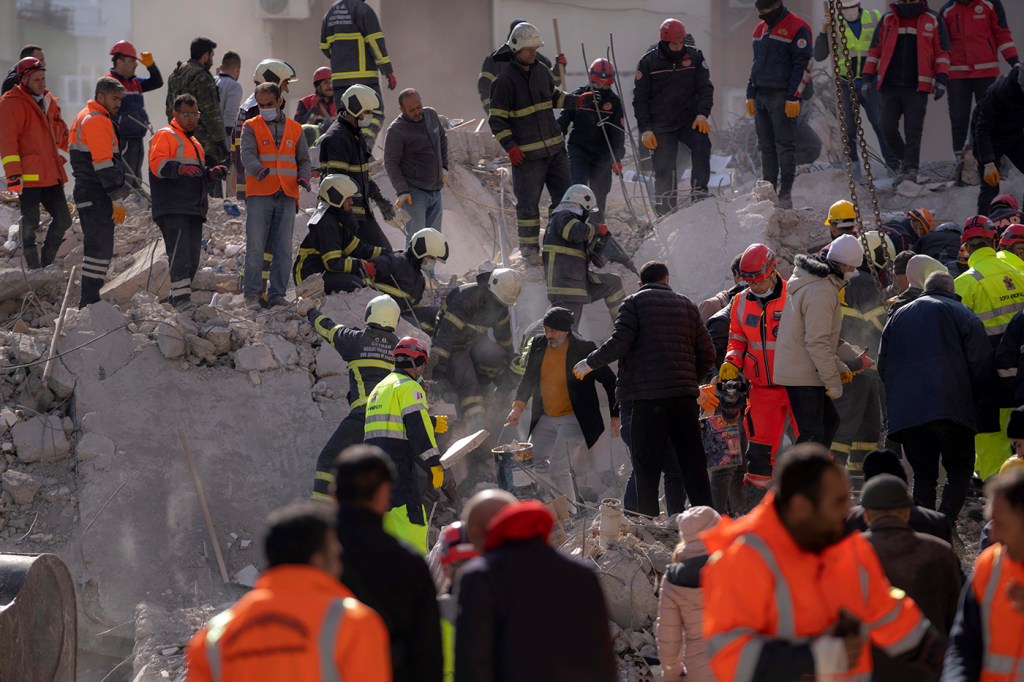How social media has become an important tool in helping disaster victims in Turkey, Syria and beyond

In the aftermath of the deadly earthquake that struck Turkey and Syria on Feb. 6, many people trapped under the rubble turned to social media pleading to be rescued.
“Whoever sees this WhatsApp status please come and help,” said Boran Kubat, 20, in a video he recorded with his cellphone.
He described the apartment building he and his family members were under, and rescuers were able to find and get them out from under the ruins, The Guardian reported.
In another video, a boy under a building in Syria, said he was trapped with several other families and neighbors.
“I don’t know if I’ll die or stay alive,” he says quietly, his voice shaking, his face and hair white from the dust. “I don’t know how to describe the feeling of someone who has been through this, under the rubble.”
There are thousands of messages on social media from people appealing for help, according to Al Jazeera, with some of them later saved by friends or rescue crews.
While some on social media have been critical of the response to the disaster, others are using its many platforms to mobilize, gather volunteers, and provide aid and sustenance.
“These local residents are not waiting for government assistance, not waiting for the Red Cross or for outside agencies to come in and say, ‘Here’s the shelter available, here’s food aid, here’s medical aid,’” says Daniel Aldrich, a Northeastern professor, director of the university’s Security and Resilience Program and co-director at the Global Resilience Institute.
He has seen people offering accommodations to those who were left homeless and a non-governmental organization, Ahbap Derneği, posting an online map of institutions offering free places to stay.
Smartphones and social media have radically changed and democratized disaster relief efforts, Aldrich told Northeastern Global News. For hundreds of years, disaster management used to be a one-way process, he says. It was either top-down—when announcements, rescue teams, relief efforts and aid came from the government—or bottom-up, when residents would call emergency services to request help.
“Social media turned that inside out,” Aldrich says.
Now, the one-way process has turned into a system where people can get updates in real time from those in need or communicate that they are available to help. People can mark themselves safe on Facebook—during a tornado or shooting, for example—and apps can determine the location of a poster’s smartphone.
During Hurricane Harvey that hit Texas and Louisiana in 2017, Aldrich says, some Houston residents were trapped in their homes not able to get through to 911. They began to turn systematically to NextDoor (an app for local communities), Facebook and Twitter to get in touch with volunteers who had canoes or could check on relatives.
“It’s a very different set of interactions than used to be the case,” Aldrich says.
The White Helmets in Syria operate without the support of local, regional or national governments. They use social media and communication apps to ask for medical aid, foreign volunteers or medical specialists, Aldrich says, or to get information to each other about where they should be going next.
“These social networks—WhatsApp, NextDoor, Facebook—are based on the recognition that I do not necessarily know directly someone who has a generator or somebody who has oxygen supply, or somebody who has medical training, but I know indirectly someone who does in my network,” he says.
Aldrich says social media often includes friends, friends of friends, and other trustworthy people.
“This idea of inverting the pyramid between the average person and disaster resources is incredibly radical and in my mind,” he says. “One of the most amazing ways the Internet has flipped the script on past emergency management and disaster management practices.”
With information traveling so fast now, there’s also a pressure on news organizations that wasn’t there before. One doesn’t need now to be a professional journalist to report from the frontlines, Aldrich says. They can be broadcasting from their phone.
“The challenge, of course, is verifying it [information],” he says.
That is why Aldrich likes the idea of verified sources in a network, something Twitter, Facebook and Instagram are already doing. He says that gives people a sense that the poster is not just someone saying something out of nowhere.
At the same time, users should double check internally whether they know and trust the source or whether they are being spoofed or witnessing a malicious attack.
Alena Kuzub is a Northeastern Global News reporter. Email her at a.kuzub@northeastern.edu. Follow her on Twitter @AlenaKuzub.






